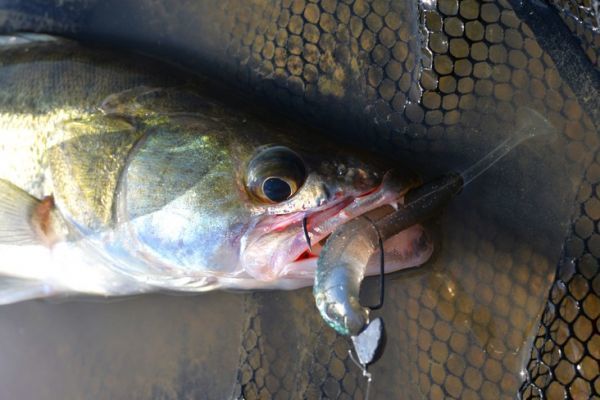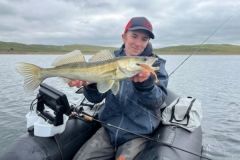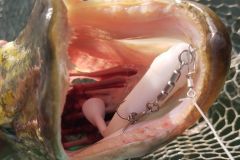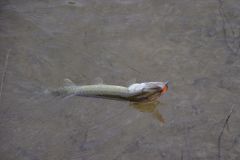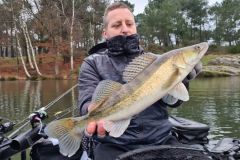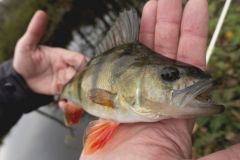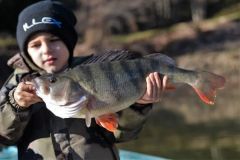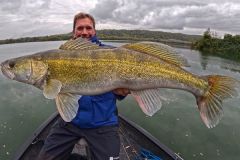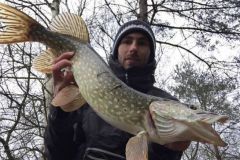Texas mounts
Texas rigs all have one thing in common: the Texas hook.
It's a hook with a bend behind the line attachment eye, a curved shank and a point that returns almost in line with the eye. As the name suggests, the Texas hook originated in the United States and was originally designed for black-bass fishing.
Fortunately, this ingenious hook is also suitable for stalking many other predators. This hook allows the point to be flush with the soft lure material, and the space created by the curvature leaves the hook free to "pop out" and sink into the mouth of a ferreting predator.
Many rigs use a Texas hook. Here are the 4 I've chosen for stalking percids.
Montage Carolina, the ball
The Montage Carolina is a rig originally designed for stalking black bass.
The Texas hook is preceded by a ball-shaped weight made of lead, brass or tungsten, which may or may not slide on the line.
The variation I use consists of leaving the ball free to slide along the line, without blocking it with a "stop float" (a small rubber strap that fits over the line).
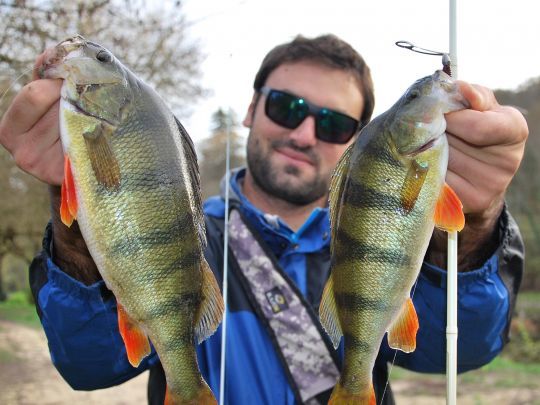
On the one hand, it's easier and quicker to rig, and on the other, it gives the lure more freedom, as it's detached from the ballast. What's more, when a fish pulls on the lure, it feels almost no resistance from the ballast, as the line slides through it. This is a plus on difficult fish.
It's a rig I've used a lot in street fishing competitions on perch, especially when I had to fish slowly along the bottom in grassy environments, overgrown with vegetation, wood and more generally with organic obstacles.
The sliding ball allows the lure to literally thread its way through logjams and insistently solicit percids.
I also use this rig in shallow areas, especially from the shore, with balls weighing no more than 7 grams. I use shad-type lures with a round cross-section, creatures or finesse.
Shad pre-mounted in Texan
This rig is becoming increasingly popular with pike-perch anglers.
Most are sold already assembled, with the soft lure already fitted with its lead head. These shad-type lures feature a ventral slot (to accommodate the Texan hook and leave the shank free for the point to emerge on striking), a groove on the back to hide the hook point and a lead head adapted to the lure. The shape of the head is adapted to the lure for optimum hold and perfect positioning of the Texan hook.
This rig allows you to fish by "swimming", i.e. by moving the lure over the bottom on linear animations. This all-purpose rig is ideal for fishing close to the bottom, thus limiting snagging when the angler resumes contact with the substrate.
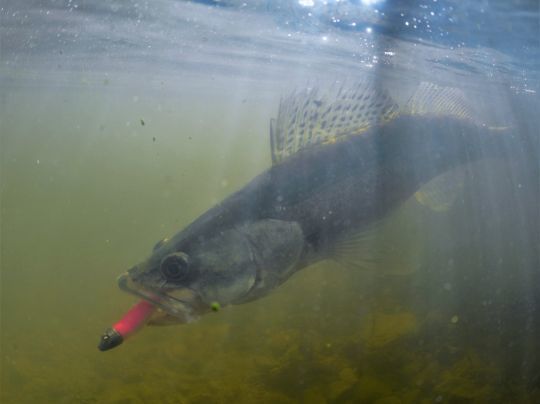
It combines suppleness and effective striking (few misses) thanks to a hook point set back at the rear of the lure. On short bites and when percids don't fully engage the lure, shads pre-mounted with Texan are still effective, even more so than classic lead heads whose hook point is completely free but less backward.
Finally, as the head is adapted to the body, this is a realistic and very imitative lure resembling a small fish. I use it for prospecting and don't want to risk getting hooked when fishing close to the bottom.
The all-terrain cheburashka
This is my favourite zander rig.
The cheburashka consists of a spherical or football-shaped weight (shaped like a rugby ball) with a metal staple through which the eye of a Texas hook (or not, for that matter) is passed.
Extremely versatile, it allows you to explore mineral obstacles, stony and rocky bottoms, as well as substrates strewn with vegetation. I use it from the shore in slow linear mode as well as from a boat or kayak in vertical mode. It has the advantage of being able to fish heavy (over 15 grams) with a 4 or 5 inch (10 to 12.5 cm) lure commonly used for zander.
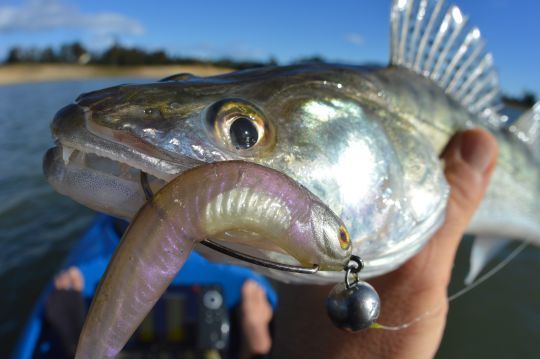
Also known as a "flexjig", this set-up offers great flexibility, allowing the lure to be very mobile and to be neatly "grabbed" by even a fussy and wary percid.
It's the Texan rig with which I've had the fewest failures on pike-perch and I highly recommend it to anglers new to pike-perch stalking.
It really lets you fish slowly on lakes and rivers, considerably reducing snagging.
Texas jighead
Tête plombée texan in French, this rig is neither more nor less than a leaded head rig, with the difference that the hook is a Texas hook. Very easy to use and inexpensive, it's a classic for percid fishing.
I use it when fishing from shore in shallow water with lures up to 5 inches (12.5 cm).
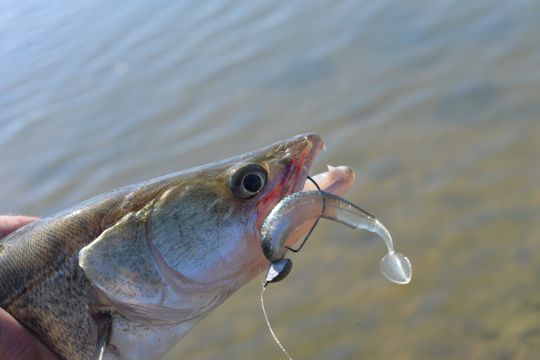
It's a set-up with which I have few hitches, and which I don't hesitate to use in the most crowded places.
Hardware
These 4 different rigs are complementary and can be used in different situations, depending on the way the fish are fished. They do, however, require specific equipment whose characteristics vary little.
With the exception of the Montage Carolina light, which I use particularly for perch, I use an extra-fast rod with M to MH (Medium to Medium Heavy) power, which gives me great sensitivity and allows me to strike with a rod that absorbs little of the strike movement, even with a Texan hook, on hard-mouthed percids such as pike-perch.
In the same spirit, I stick to relatively short rods (1.98 m to 2.10 m). To be consistent in terms of casting power and sensitivity, I use PE0.8 or PE1 braid, with a strength of 14 to 18 lbs (7 to 9 kg) and a fluorocarbon leader of 10 to 14 lbs (5 to 7 kg), i.e. 22 to 30/100.)
A reel with a high retrieve ratio is ideal for bringing the lure "to the reel", keeping perpetual contact with the lure at the slightest movement of the crank. Although adapted, I don't use casting rods much, and fish mainly with spinning rods, except for vertical fishing.
A preference surely linked to my habits and landmarks.

 /
/ 